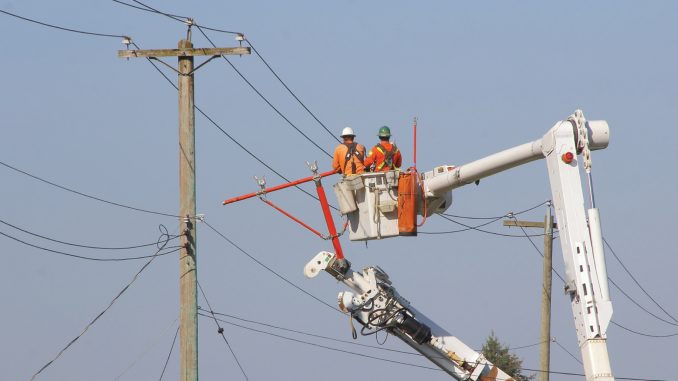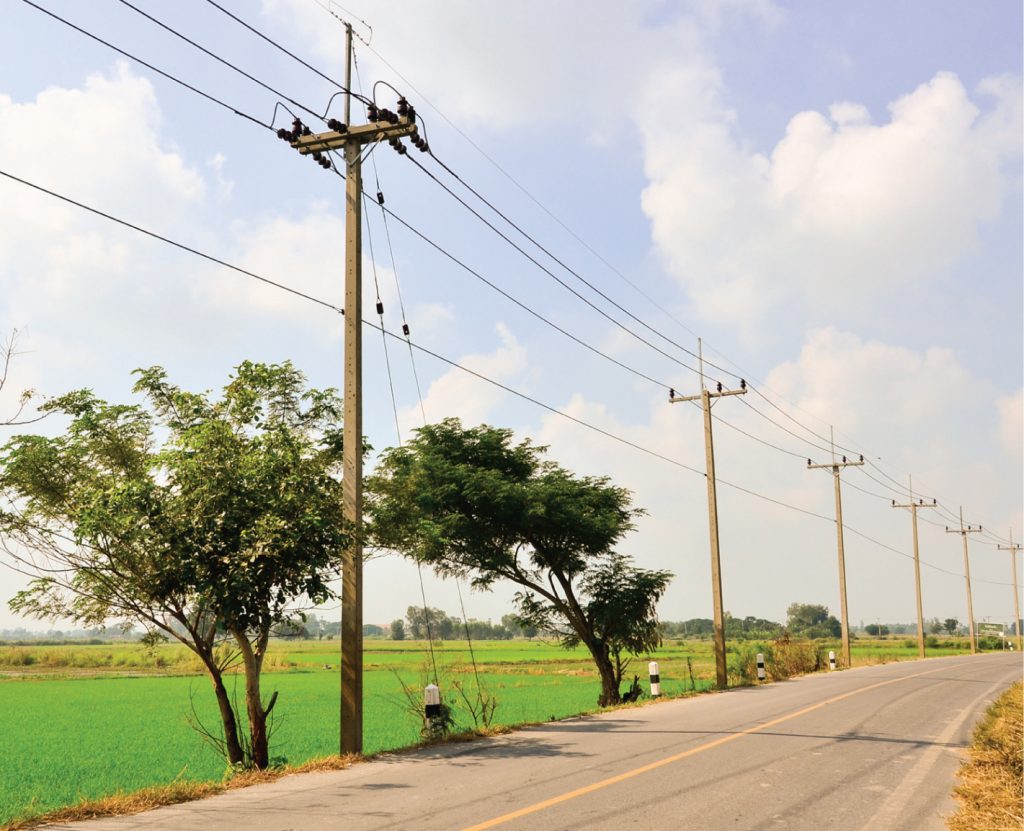
The Ujwal Discom Assurance Yojana (UDAY), which was launched in November 2015, has been the centerpiece of power sector reforms. The scheme follows two unsuccessful attempts at reviving the power distribution segment with bailout packages in 1991 and 2012 respectively. UDAY was, however, claimed to be different than the earlier packages as it “aimed to provide a sustainable permanent solution to the problem (of deteriorating discom finances)”. Nearly two years down the line, the health of discoms has begun to improve with reported savings of nearly Rs 120 billion in interest costs and an improvement in operational performance parameters.
However, the improvement in operational parameters such as aggregate technical and commercial (AT&C) losses, feeder metering and billing efficiency varies across states and there is ample scope for betterment. Also, a downside of the scheme is the deterioration in state government finances and an increase in debt levels post the implementation of the scheme vis-à-vis the pre-UDAY levels. The Economic Survey 2017-18 (Volume-2) released in August 2017 rightly points out that “UDAY is not a panacea for addressing fiscal situations, though it has had a significant impact on addressing the structural issues attached with the power sector”.
Power Line presents an update on the progress of UDAY in the past year…
State participation
The improvement of the power distribution segment requires concerted efforts by the central and state governments. UDAY has witnessed commendable participation with 27 states/union territories (UTs) on-board for the scheme. These include Rajasthan, Uttar Pradesh, Chhattisgarh, Jharkhand, Punjab, Bihar, Jammu & Kashmir, Haryana, Andhra Pradesh, Madhya Pradesh, Maharashtra, Himachal Pradesh, Telangana, Assam, Tamil Nadu, Meghalaya, Arunachal Pradesh, Goa, Gujarat, Karnataka, Kerala, Manipur, Mizoram, Puducherry, Sikkim, Tripura, and Uttarakhand. In addition, Odisha has in principle agreed to join the scheme, but has not been able to sign the MoU because a part of its discoms are owned by private sector players. Of the 27 states/UTs listed above, the first 16 states have joined the scheme for both operational as well as financial improvements, while the remaining states/UTs have signed the MoU only for operational improvement.
Bond issuance
Under UDAY, the state governments are required to take over 75 per cent of discoms’ debt and issue bonds to the lenders. The remaining debt has to be paid back through bonds issued by the discoms. States/discoms have made decent progress on the bond issuance front. As of September 2015, the total debt of all state-owned discoms stood at Rs 3.95 trillion. The UDAY states account for 97 per cent or Rs 3.82 trillion of the total debt. So far, 16 states/UTs have issued UDAY bonds totaling Rs 2.32 trillion, indicating an overall progress of about 86 per cent.
Interest cost reduction
The 75 per cent debt takeover by states and subsequent reduction in interest costs has given some breathing space to discoms to invest in system upgradation and loss reduction measures. The debt was initially being serviced by discoms at interest rates of 11-12 per cent but post the scheme, the state governments are servicing it at reduced rates of 7-8 per cent. In addition, banks have restructured/issued bonds for the remaining loan portfolio of discoms, thereby reducing the interest burden by 3-5 per cent. The overall savings due to reduction in interest costs are estimated at about Rs 120 billion as of December 2016. The states with highest savings in interest costs are Rajasthan (Rs 50.68 billion), Uttar Pradesh (Rs 33.28 billion) and Haryana (20.84 billion).
Power purchase cost and ACS-ARR gap
In recent years, the union government has taken several steps such as increased supply of cheaper domestic coal and coal linkage swapping to reduce the cost of power in order to enable discoms to buy more power at competitive prices. As a result, the overall power procurement cost of UDAY states has reduced from Rs 4.20 per unit in 2015-16 to about Rs 4.16 per unit in 2016-17. The states that have witnessed maximum reduction in 2016-17 vis-à-vis 2015-16 include Goa (from Rs 3.34 per unit to Rs 2.85 per unit), Telangana (from Rs 5.07 per unit to Rs 4.66 per unit), and Andhra Pradesh (from Rs 4.70 per unit to Rs 4.32 per unit).
The reduction in power purchase cost has also helped to narrow the gap between the average cost of supply (ACS) and average revenue realised (ARR). The overall ACS-ARR gap of UDAY states has reduced from 59 paise per unit in 2015-16 to about 45 paise per unit in 2016-17. Rajasthan has been able to reduce the gap considerably from Rs 1.68 per unit to Re 0.50 per unit during this period.
Tariff revision
The regularity and adequacy of tariff hike is crucial for sustained improvement of the financial health of discoms but the progress on this front is less than satisfactory. So far, only 16 out of 27 UDAY states have notified retail supply tariff orders for 2017-18. Of these, only Bihar, Uttarakhand, Madhya Pradesh, Karnataka, Gujarat and Assam have notified tariff hikes equal to or greater than the targets mentioned in the UDAY MoU. However, discoms of major states like Tamil Nadu, Rajasthan, Uttar Pradesh and Jharkhand have not yet revised the tariffs, in violation of their UDAY commitments.
AT&C loss reduction
A key impact of UDAY has been reduction in AT&C losses of states participating in the scheme. The average losses of these states have declined from about 21.1 per cent in 2015-16 to 20.2 per cent in 2016-17. The loss reduction ranged between 2 per cent and 9 per cent for states like Himachal Pradesh, Manipur, Jharkhand, Haryana, Goa, Rajasthan and Uttarakhand. Meanwhile, Gujarat, Bihar, Puducherry, Maharashtra, Chhattisgarh, and Jammu & Kashmir recorded AT&C loss reduction in the range of 0.1 to 2 per cent. However, AT&C losses continued to increase in other major states such as Uttar Pradesh, Tamil Nadu, Punjab, Madhya Pradesh and Andhra Pradesh.
As a result of reduction in AT&C losses and tariff revision, the billing efficiency of discoms has improved. According to the Ministry of Power (MoP), the overall billing efficiency has increased from 81 per cent in 2015-16 to 83 per cent in 2016-17.
Smart metering
As per UDAY MoUs signed by states, smart meters have to be installed for all consumers with consumption of more than 500 units per month by December 31, 2017 and with consumption over 200 units per month by December 31, 2019. However, progress on this front is tardy mainly owing to the high cost of smart meters. The overall progress in the deployment of smart meters is just about 4 per cent. In the above 500 kWh category, about 0.13 million smart meters have been installed against the total target of over 5 million, while in the 200-500 kWh category, only 0.15 million meters have been installed against the targeted 17.5 million. In order to encourage states to deploy smart meters, the MoP through Energy Efficiency Services Limited has released a bulk tender to procure 5 million smart meters on behalf of Haryana and Uttar Pradesh. With a number of states joining the UDAY scheme, more such tenders for smart meter procurement are expected in the coming months.
Others
Under UDAY, improvements have been witnessed in power access by unconnected households, the distribution of LEDs under UJALA (Unnat Jyoti Affordable LEDs for All), feeder metering and rural feeder audit, with 80 per cent to 100 per cent progress in these areas. However, progress in feeder segregation (43-53 per cent of the target achieved) and distribution transformer (59 per cent of the target achieved) metering is slow. States like Andhra Pradesh, Gujarat, Maharashtra and Karnataka have performed better in terms of operational aspects like electricity access, distribution transformer metering and feeder metering but Uttar Pradesh, Tamil Nadu and Himachal Pradesh have not shown any significant improvement.
Issues and the way forward
The transfer and refinancing of over 86 per cent of the scheduled debt under UDAY has been a remarkable progress for the discoms but has had an adverse impact on state finances. As per the Economic Survey 2017-18 (Volume 2), the combined fiscal deficit of states in 2016-17 was estimated at 3.4 per cent after including the UDAY liabilities while it would be 2.7 per cent without the UDAY liabilities. Although the impact of UDAY on state finances was expected but it points to the fact that transferring discom liabilities to state governments is not a sustainable solution.
Another key concern that observers point out is the varied performance across states. Across nine states, AT&C losses increased in 2016-17 compared to 2015-16. These were Tamil Nadu (an increase of 0.15 percentage points), Telangana (0.18), Karnataka (0.21), Madhya Pradesh (1.19), Kerala (1.25), Andhra Pradesh (1.55), Punjab (1.62), Assam (2.97) and Uttar Pradesh (3.74). Also, according to ratings agency ICRA, progress in the filing of tariff petitions for 2017-18 by state-owned discoms is less than satisfactory, with only 16 out of the 29 states having filed tariff petitions.
Further, it has been observed that not all discoms are using their enhanced financial position to initiate reforms such as introducing private participation, improving line losses and ensuring metering. Besides, the declining plant load factors of thermal power plants prove that power procurement by discoms has not picked up despite improved finances. Going forward, UDAY’s success lies in the prudent management of discoms on commercial principles as well as the timely revision of power tariffs.






